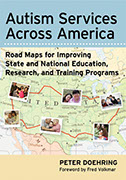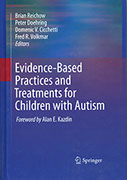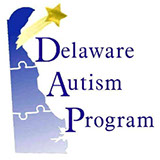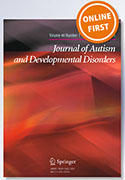2015-2016
AJ Drexel Autism Institute Drexel University
Associate Research Professor
DUThe A.J. Drexel Autism Institute is the first research organization built around a public health science approach to understanding and addressing the challenges of autism spectrum disorders.
I was excited to have been recruited to join the AJ Drexel Autism Institute, because its public health approach to ASD was consistent with my goals of exploring how to create programs that were accessible, scalable, and sustainable. A complete description of my work at Drexel is captured in the Transition Pathways Proposal.
 Re-framing data from well-controlled studies, highlighting key findings in a user-friendly format, can help to guide advocacy
Re-framing data from well-controlled studies, highlighting key findings in a user-friendly format, can help to guide advocacy
I was asked to join the Life Course Outcomes Research Program at the AJ Drexel Autism Institute just as the first National Autism Indicators Report was being completed. This report re-analyzes data from two other national surveys that address the transition to adulthood. The report presents the results in a format (including info graphics and fact sheets) intended to facilitate the use of these data in policy decisions. I became very familiar with this report in the course of presenting findings to policy conferences in Ohio and in Texas, and was struck by the buzz it generated.
Elements of the style and formatting from the National Autism Indicators Report complemented other lessons I had learned about the need to organize the findings of outcome research into clear practice guidelines. These lessons had previously led me to develop templates for training staff at the Delaware Autism Program in core practices in ASD identification and behavior support. I later adapted templates for summarizing research to guide chapter authors responsible for summarizing evidence-based practices in my 2011 book. I also incorporated the style and format of the National Autism Indicators Report into the materials supporting the presentation of the Transition Pathways Proposal to our funder.
My opinion pieces examining research on the prevalence of ASD re-frame existing data (in this case, from the ADDM network) using simple talking points and info-graphics, like the National Autism Indicators Report. My goal was, however, to use these elements to support proposals for specific research and policy initiatives. These proposals build on questions I outlined in my 2016 editorial, and on the framework for integrating services, training, research, and policy I described in my 2013 book.
Related Content
On this site
My Presentations and Publications
 (2013). Autism Services Across America: Roadmaps for Improving State and National Education, Research, and Training Programs. Paul H. Brookes Publishing Co., Baltimore, MD
(2013). Autism Services Across America: Roadmaps for Improving State and National Education, Research, and Training Programs. Paul H. Brookes Publishing Co., Baltimore, MD
(2015) With Anne Roux. The National Autism Indicators Report: The Transition into Young Adulthood.
![]() Invited workshop, Annual Statewide Conference: Texas Autism Research and Resources Center, Austin, TX.
Invited workshop, Annual Statewide Conference: Texas Autism Research and Resources Center, Austin, TX.
![]() Ohio Center for Autism and Low Incidence Conference, Columbus, OH.
Ohio Center for Autism and Low Incidence Conference, Columbus, OH.
 (2011). Evidence-Based Practices and Treatments for Children with Autism. Springer-Verlaug, New York, NY.
(2011). Evidence-Based Practices and Treatments for Children with Autism. Springer-Verlaug, New York, NY.
Lessons from my other programs
X






